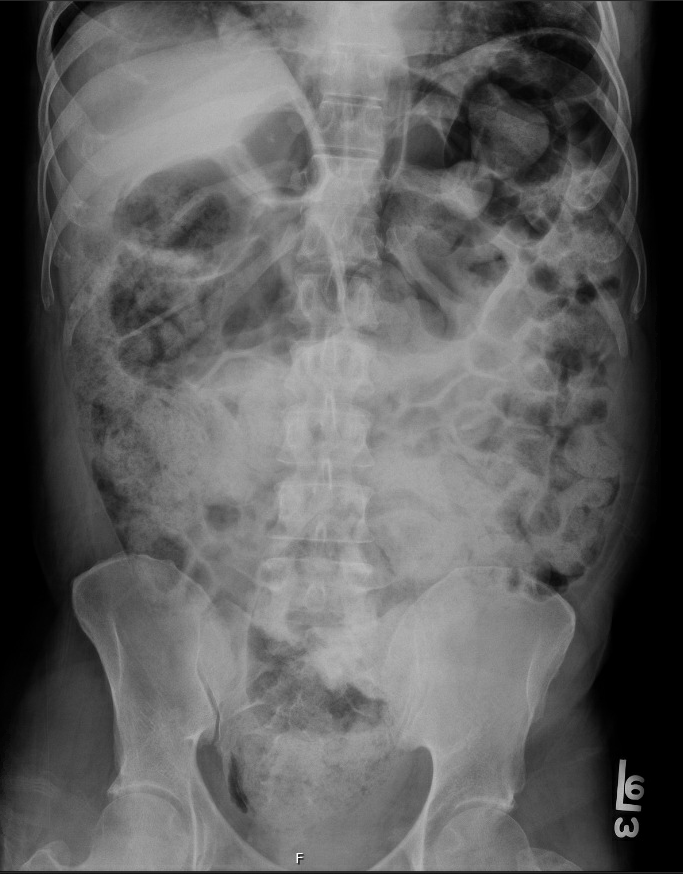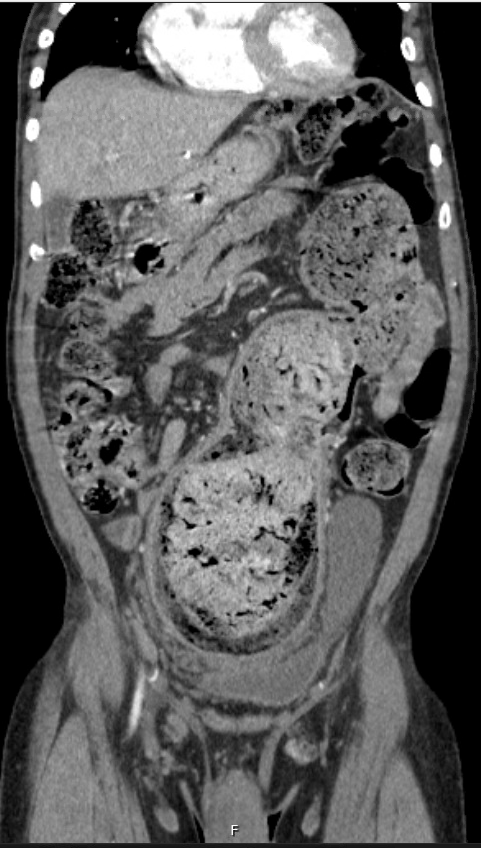Case Presentation: We present a 55-year-old male with a history of chronic constipation refractory to extensive bowel regimens, disimpactions and colonoscopies. Patient presented to the Emergency Department with 5 months of constipation and a history of long periods of constipation since birth, sometimes lasting a year. On exam, patient’s abdomen was distended with decreased bowel sounds and mass palpated in the umbilical region. Imaging showed large rectosigmoid stool ball extending from the mid sigmoid to the distal rectum with no obstruction. He was put on an extensive bowel regimen with laxatives and enemas with minimal relief of stool burden. Patient underwent a manual disimpaction under anesthesia and sigmoidoscopy with rectal biopsies. Biopsy results showed aganglionosis in the submucosa, concerning for Hirschsprung. The patient was referred for definitive surgical management.
Discussion: Adult Hirschsprung disease is a rare condition that can easily go undiagnosed. Hirschsprung disease is typically a disease of infancy, also known as congenital aganglionic megacolon. The incidence of the disease in infancy is approximately 1 in 5000 live births with males more commonly affected than females with a ratio is 3:1 to 4:1. Although uncommon, the diagnosis can be missed in infancy as 5% of cases are diagnosed as adults1. Presentation in adulthood is usually chronic constipation, but can also be acute complications, such as volvulus or obstructive colitis.
Conclusions: This patient suffered with constipation his whole life and went undiagnosed despite multiple procedures to relieve his symptoms. This case is a great example of how easily Hirschsprung can be misdiagnosed or undiagnosed and how important it is for clinicians to consider it as a differential diagnosis given a concerning history.


